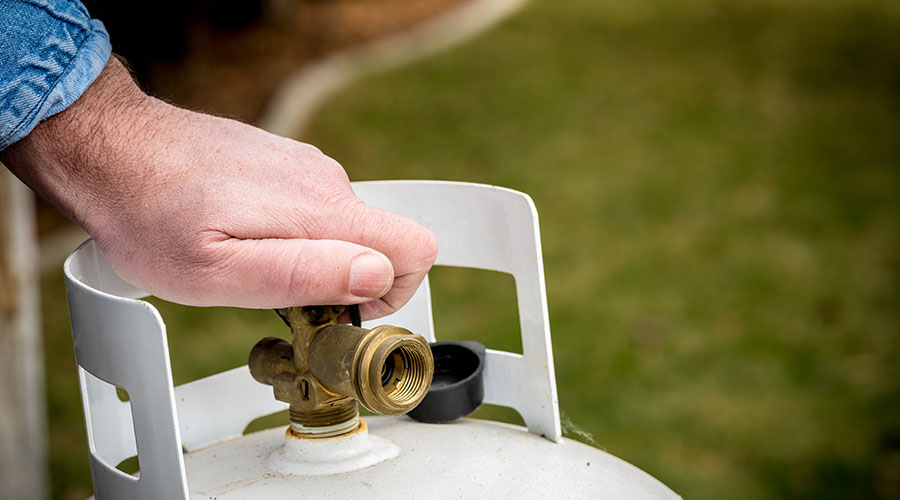Emergency Preparedness: Going Beyond the Basics
Readiness for natural disasters requires a plan, effective training, and a preparedness-focused culture.
It looked like a disaster from a Grey’s Anatomy episode, but it was a real-life event.
Brown floodwaters surged over a washed-out road and winds howled against the walls of Unicoi County Hospital, while staff at the rural Tennessee hospital moved patients to the roof for a daring helicopter rescue.
In another natural disaster, wildfires pushed California caregivers to the brink.
As the Los Angeles fires intensified, evacuation orders came for several long-term care facilities. Again, staff and emergency teams raced against time to rescue at-risk residents.
Disasters like these expose the unique challenges faced by facility executives in institutional and commercial facilities that care for vulnerable populations with diverse needs. Here, preparedness can make a difference.
“We don’t want to be alarmists,” says Glenn Thomas, director of Safety and Risk Management at Continuing Life, a group of continuing care retirement communities (CCRCs) where residents can age in place, which means residents range from fully independent retirees to those requiring skilled nursing or memory care. “But we want to be prepared. Because when the moment comes, preparation saves lives.”
The California Association of Health Facilities (CAHF), which represents skilled nursing and intermediate care facilities in California, has developed emergency response best practices for long-term care facilities.
“Most of the nursing homes in our state use templates and emergency operations plans and the incident command system (ICS) we developed for nursing homes,” says Jason Belden, CAHF director of emergency preparedness and physical plant services.
Events like fires and flooding show that emergency plans must account for a spectrum of different needs.
“There is no one-size-fits-all approach (to emergency response),” Thomas says. “Emergency preparedness must be built around each level of care, which is governed by different regulatory bodies with different standards.”
Start at the very beginning
The foundation of any effective response plan begins with a hazard vulnerability assessment (HVA). Whether you’re running a school, managing a busy factory floor, or operating a complex healthcare facility, this critical first step sets the stage for everything that follows, Thomas says.
“The most important element of emergency planning is taking a hard look and being realistic about your hazards, then taking steps to build an emergency plan,” he explains.
It sounds simple, but this process requires deep insight and open dialogue across the organization.
An HVA puts leadership and operational teams around the same table to examine actual risks and prioritize concerns specific to their environment. For a manufacturing plant, this might mean confronting the potential dangers of toxic chemicals. In a pediatric hospital, the possibility of infant abduction could rank high. In high-stress workplaces, the threat of workplace violence might top the list.
“Whatever hazards exist, you have to consider them,” Thomas says. “That becomes your starting point for building emergency plans. You do your hazard vulnerability assessment. Rank your top five to 10 hazards, then build your plans based on that list.”
Check every box
Once an organization has an HVA, the next step is transforming those risks into a real-world response plan. This is where bringing in experts can make a difference, Thomas says.
“Local emergency responders — whether it’s police, fire, or EMS — are almost always willing to partner with businesses and healthcare facilities to develop an emergency plan,” Thomas says. “Such collaboration helps first responders understand what we feel the biggest hazards are, what they may need to respond to, and what hazards they may encounter when they respond.”
But Thomas is quick to point out that while expert input is essential, so is originality.
“There are a lot of great templates for disaster or emergency plans already available,” he explains. While templates can be a helpful starting point, he warns against falling into the “paper compliance” trap — the practice of downloading a generic plan, putting it in a binder, and calling it done.
“That binder might check a regulatory box,” Thomas warns, “but it will not help you when the power goes out, the roads close, a fire is approaching, and you’re trying to move 800 people to safety.”
The solution? Customization and training.
“You need to develop the plan, consulting with people that can help you fine-tune it,” Thomas advises. “Then you need to learn the plan, educate employees on it, and train to the plan.”
Train to the plan
Preparedness starts and ends with frequent and proper training.
“Training is the most important element of emergency planning,” Thomas says. “It helps everyone understand what their roles are, what their capabilities are, and what they need to do during an emergency.”
While regulatory standards require organizations to review emergency plans and train employees annually, Thomas is quick to note that’s just the floor — not the ceiling. “That’s the bare minimum,” he stresses.
Most healthcare facilities, he points out, go beyond that with semi-annual training that ranges from tabletop discussions to full-scale emergency drills. These exercises simulate real-world scenarios designed to test and fine-tune response efforts.
Drills engage all employees, simulating their roles in crisis response. “We might have people performing first aid, people setting up triage areas, and people isolating utilities and shutting off gas and power,” he says. “We customize the scenario, then have people in the field exercising and doing these things.”
Belden likens frequent training to an athlete practicing a sport.
“The more you practice, even just through conversations or mini scenarios at shift changes, the more second nature your response becomes,” he says.
But training isn’t just about muscle memory. It also includes making sure the plan is up to date. Thomas recommends a thorough review annually, starting with the HVA. Changes in the surrounding environment, he says, can dramatically shift a facility’s risk profile and must be accounted for.
“Maybe a new lithium battery facility has been constructed next door, and it changes your top hazards,” he says. “You need to sit down, revisit your HVA, and update your plan accordingly.”
The review must also update emergency contacts and phone numbers. “You do not want to discover during an emergency that your emergency contact or phone numbers are incorrect,” Thomas warns. “You need to be prepared to respond at a moment’s notice.”
Ronnie Wendt is a freelance writer based in Minocqua, Wisconsin.
Related Topics:












